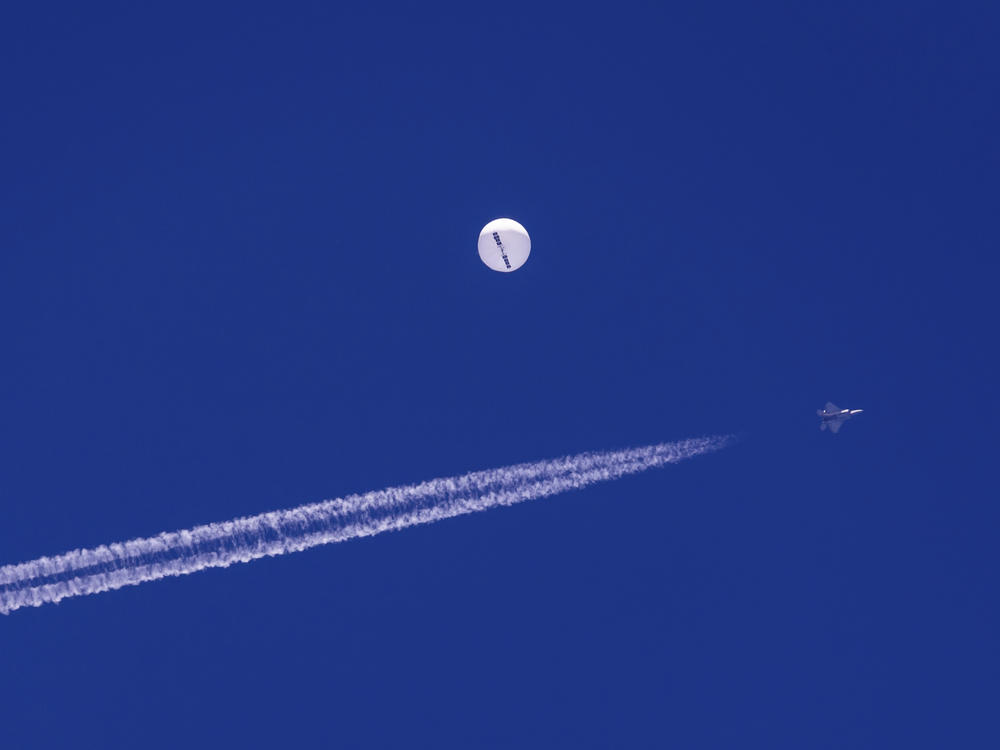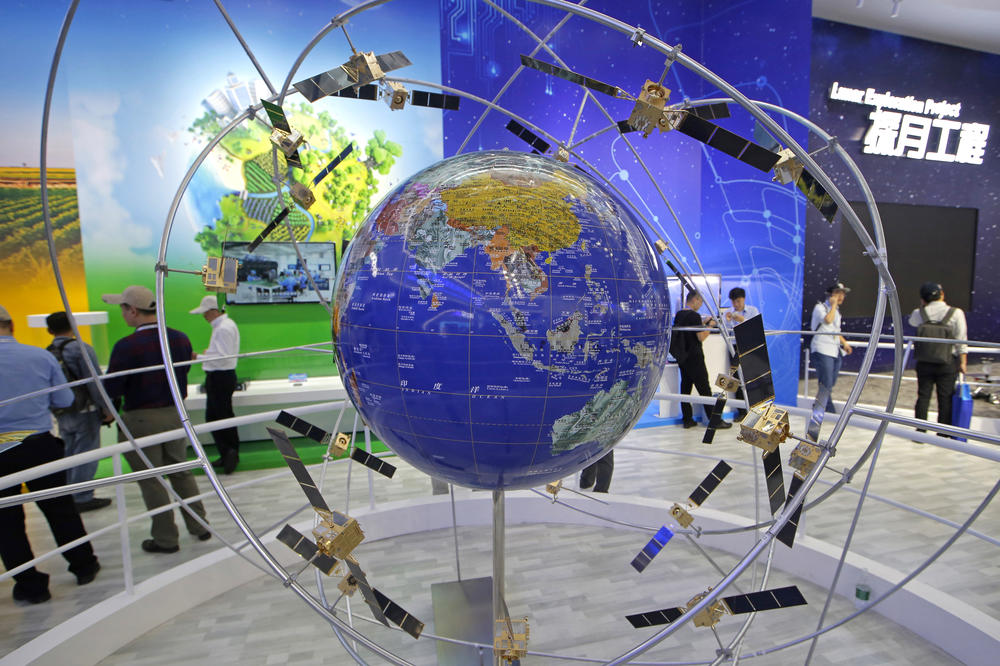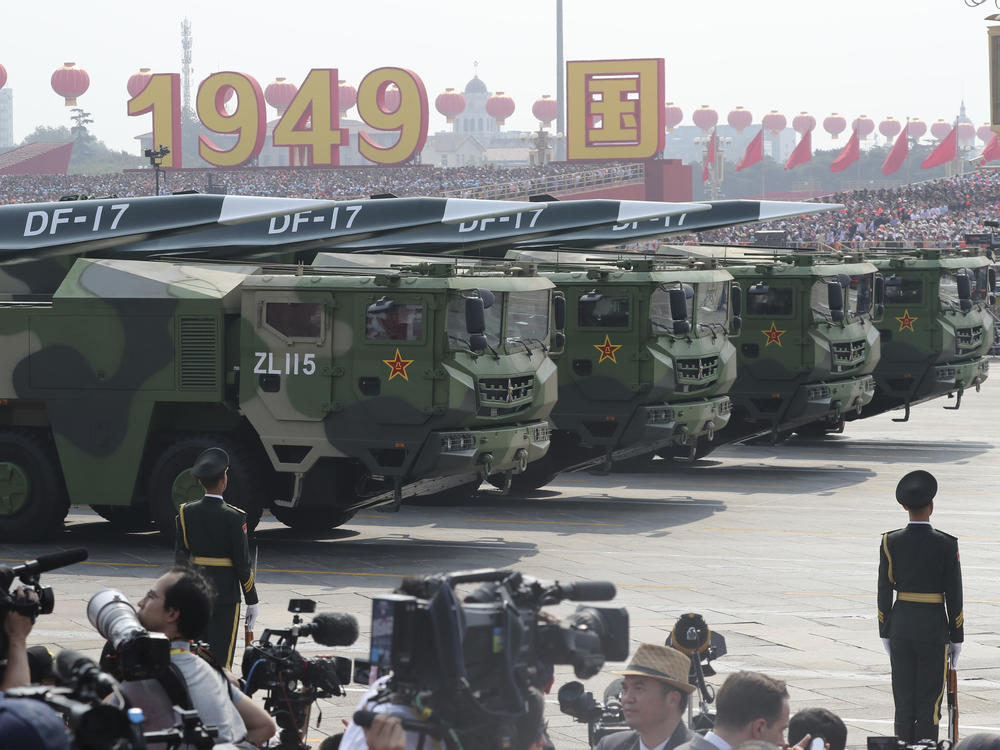Section Branding
Header Content
The Chinese balloon saga could be part of a new space race closer to Earth
Primary Content
TAIPEI, Taiwan — Back in March 2018, Chinese officials and key state scientists gathered in Beijing to celebrate the start of a new front in research: near space.
That's a part of airspace 60,000 to 330,000 feet from the ground, just before the beginning of outer space — and historically overlooked by militaries, until recently.
"Strengthening the exploration and understanding of near space, seizing the strategic commanding heights of near space and cultivating emerging high-tech industries have become the focus of competition among countries around the world," declared Xiang Libin, a vice president of the Chinese Academy of Sciences. Xiang, an engineer who specializes in microsatellites and space technology, also serves as chief commander of the Beidou satellite system, China's competitor to the U.S.-run GPS.
The research initiative would be dubbed the Honghu Program and focused on producing near-space technology that can "identify clearly, stay in place and be useful," Xiang said. He vowed to build "my country's first near-space science experiment system."
Earlier in February, American defense officials revealed they had been tracking a Chinese balloon they alleged had been set aloft for intelligence-gathering purposes that had drifted over continental United States. The U.S. soon shot down the balloon, setting off further diplomatic tensions between the two countries.
While it is unclear whether Honghu's research was incorporated in the object shot down by the U.S., the program's existence reflects the renewed importance Chinese military officials attach to airships. These airships, officials and researchers say, are not just tools for surveillance or gathering weather and meteorological data, but they also provide help with advanced weapons China is building, including hypersonic missiles, and are a new and important area of competition with the U.S.
Near space is an emerging battleground
U.S. defense officials say they believe the downed balloon was part of a fleet of surveillance airships Beijing has been building and deployed over 40 countries around the world. Suspected Chinese balloons have been spotted in Japan, Taiwan, India, Latin America and Hawaii in the past three years.
The sightings could reflect years of Chinese state and private investments into balloon capacity, making use of a centuries-old technology that could drift at low enough speeds that radar systems might not immediately tag them as foreign objects.
China's efforts to develop aerial surveillance capacities were partly prompted by competition with advancements in near-space technology in other countries, including from the U.S.
"Near space has become a new battleground in modern warfare," said the Liberation Army Daily, a state-run newspaper affiliated with the Chinese military.
The balloons float along a band of the atmosphere up to 164,000 feet high, just before outer space begins — the peripheral area called near space. That altitude, straddling outer space and commercial airspace, makes the balloons useful for fine-tuning and targeting hypersonic weapons, which China is developing.
"When you're launching a ballistic missile, the meteorological information about where you launch is probably the most important meteorological data that you can cover. But hypersonic weapons fly low, on the edge of the stratosphere at altitudes of 100,000 to 120,000 feet. The balloon is giving you that data," says Carl Schuster, a retired U.S. Navy captain and former director of operations at then-U.S. Pacific Command's Joint Intelligence Center.
Their hypersonic application has turned slow-moving balloons, previously considered a low-tech option, into a surveillance and navigational tool seen as increasingly crucial by Chinese military officials.
"Near-space vehicles have increasingly become the new darling of long-range and rapid strike weapons, and the pace of future wars will therefore be significantly accelerated," declared an editorial last year in Chinese state media.
Even weather research can have military applications
The Honghu Program — named after the Chinese for "swan" — is one key way China has tried to advance its high-altitude technology.
Run through the state-run Laboratory of Quantitative Remote Sensing Information Technology in Beijing, the Honghu Program's researchers focused their efforts on developing materials light yet strong enough to prevent gas leakage at such high altitudes and to improve the limited steering abilities of the blimps.
"There is no air convection effect in the adjacent space, so the aircraft is difficult to control," Chinese military commentators have noted.
Over the next two years, scientists affiliated with the project would conduct six experiments launching balloons from northwestern Qinghai province, off the elevated Tibetan plateau that extends into the province. The experiments were designed to collect atmospheric and wind data as well as ground data from the balloons, according to state media.
Much of that research appears purely scientific, based on papers and patents published by near-space researchers, in line with Beijing's claim that the airship shot down over the U.S. was a civilian research balloon. Yet even simple meteorological data can have military applications, say analysts, collected at a fraction of the cost of operating a satellite.
"Balloons are one possible way to do what the U.S. military calls a kill chain. It's kind of all the steps you would need in terms of finding the target, getting that information to the hypersonic missiles, then giving updates to the missile," says William Kim, a consultant for Washington-based think tank the Marathon Initiative.
That importance has led the Chinese government to bring in private players as well. Less than a week after the U.S. shot the Chinese balloon out of the sky, the U.S. Commerce Department slapped sanctions on six Chinese entities "for their support to China's military modernization efforts, specifically the People's Liberation Army's (PLA) aerospace programs including airships and balloons and related materials and components."
Four of the six companies are private enterprises founded or run by just two men: Wu Zhe, an aerospace engineer and professor, and Wang Dong, a technology investor.
"Beijing's own program of civil military fusion certainly seeks to bring in more private companies, largely because I think the Chinese government views them as more innovative and providing better capabilities than what their state-owned enterprises have been able to do in the past," says Matthew Turpin, who served as a top White House China expert in the Trump administration.
An online biography for Wu showed a career first built within the public sector, teaching at Beihang University, a state aeronautics institute now sanctioned by the U.S. government for its military ties. He then became a member of the Chinese army's General Armaments Department.
In 2015, Wu struck out on his own, founding an aerospace company dedicated to developing what it called "near-space vehicles," including balloons. In 2019, one of his companies said it successfully circumnavigated the globe with a silvery, high-altitude blimp.
Such private innovation seems motivated in part by geopolitical rivalry with the United States. Published papers from Chinese government-affiliated research bodies closely monitored U.S. private companies and technology, including SpaceX, and measured domestic progress in near-space research with these companies.
"First of all, near-space airships are different from satellites and airplanes in that they can track a certain position on the ground in one place for a long time," according to a military editorial in Xinhua, China's state news agency. "Secondly, the near-space aerostat is very close to the Earth, so whether for surveillance or for filming, the image will be very clear."
The relatively close distance near-space balloons have to the Earth's surface and their ability to stay fixed to one spot, depending on the winds, let them fill a surveillance niche missed by satellites.
"You can know who key individuals are who work in certain areas," says Turpin, who is a visiting fellow at the Hoover Institution, a Washington think tank. That means Beijing can use high-resolution imagery amassed over time to map out the routines and locations of important personnel who work at military sites.
The suspicion that foreign countries are gathering intelligence from the air runs both ways. Earlier this month, a Chinese Foreign Ministry spokesperson accused the U.S. of flying its own surveillance vehicles "more than 10 times" into Chinese airspace above Xinjiang and Tibet — which the U.S. has denied.
"We do not send spy balloons over China — period," Secretary of State Antony Blinken told NPR in an interview.
Copyright 2023 NPR. To see more, visit https://www.npr.org.
Bottom Content



